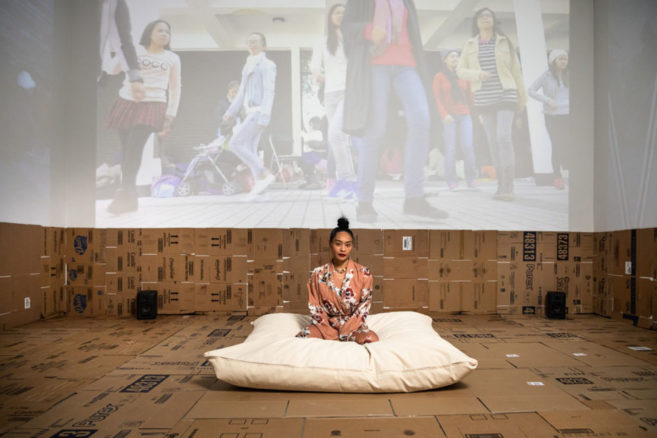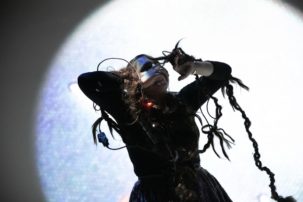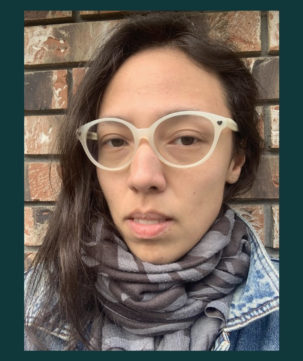Peaches: Has anybody ever asked you this question: How do you identify? How do you identify yourself? I get asked it all the time, as an artist but also in terms of gender.
Stephanie Comilang: Yes, I mean I guess the answer would be that I’m a Filipino Canadian artist living between Berlin and Toronto…
P: But in terms of gender? For me it’s more a question about gender specifically, and femme not just as femininity. I’m not trying to create other definitions of your intersectionality, but there are so many different definitions. Femme doesn’t necessarily mean you are classically feminine; it can also just relate to honouring your binary, or your nonbinary, perspective.
SC: Totally. Part of my practice right now is collaborating with my mother—who has been doing voiceover for me—and working with drones. Drones are normally used for war and surveillance, but I’ve been giving my drone a personality. I fly her really close to the ground, and a lot of the time she’s at eye level. She sort of moves in this more human way.
P: Why is it important for you that your drone is seen as female, or from a female perspective? Flying it low and at eye level—is it kind of like a female gaze?
SC: I think it’s more humanizing.
P: What makes it particularly “femme,” then?
SC: I think using my mother’s voice is one thing—I feel like she’s very empathetic. She really empathizes with the characters in my film, Lumapit Sa Akin, Paraiso (Come To Me, Paradise) (2016). As a person and as the voice of the drone, she is really watching out for people, rather than surveilling them.
P: So would you say that is more of a maternal gaze? Instead of surveillance, or looking with disdain, or opposition, or non-acceptance.
SC: It’s more maternal, that’s true. When you survey, you’re trying to pick things out, trying to catch someone doing something. If you’re looking out for someone, that’s different.
P: It’s less judgmental.
SC: It’s more caring. The women in the film are Filipino migrant workers living in Hong Kong, and on their day off
they try to find this drone called Paradise—they try to summon Paradise to them. Paradise acts like a vessel for the women to send messages and photos and videos back home. So there’s this connection between her (my mother), as the drone, and the women; they become one and the same.
P: Did you ever have a feeling that if you worked with traditional camera set-ups, instead of using the drone and humanizing it, that your crew would be, like, “That’s not the way you do it”?
SC: Yeah, actually, it was really cool because I did hire a cinematographer for the film, Iris Ng, and she was the one who got me thinking about how to use the camera as a character, and about using the drone. She was amazing as a cinematographer; she’s Hong Kong Chinese and also has a story of migration, so she really wanted to be a part of the project. I had an all-female team, except for Tobias Lee (a.k.a. Why Be), who did the music, but his story is also one of movement, and migration, and financial insecurity. So I was really thinking about what femme means, as an idea, because the scope is so large.
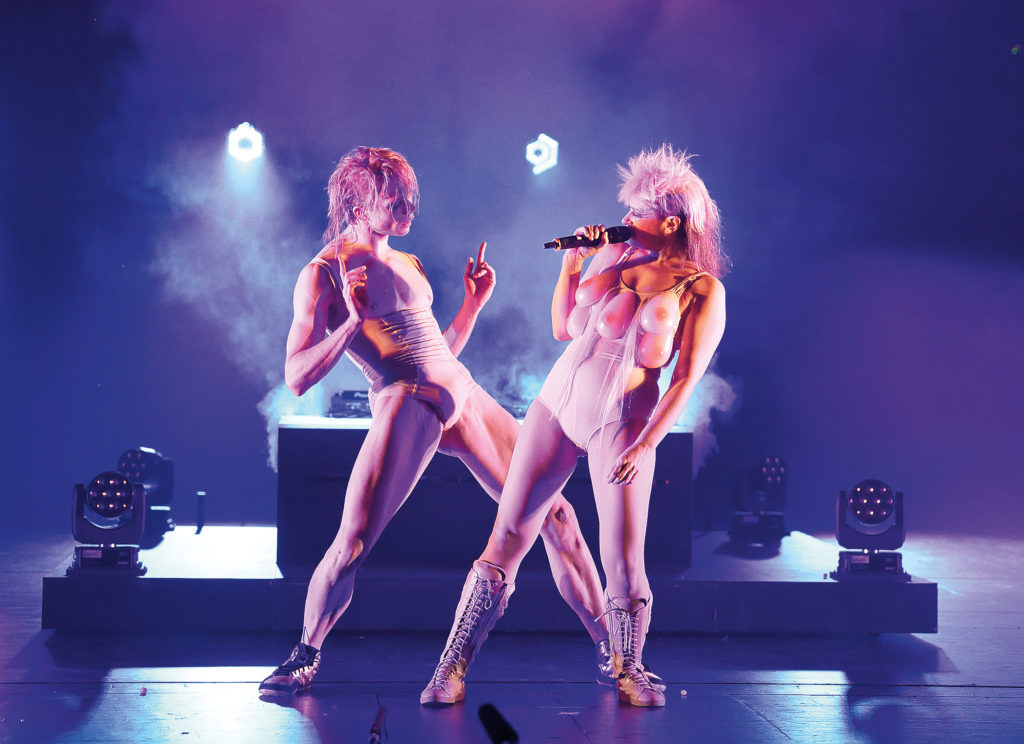 Peaches, with the Stuttgart Ballet’s Louis Stiens, performing Seven Heavenly Sins, a live testimonial that was part of The Seven Deadly Sins ballet, with compositions by Kurt Weill and text by Bertolt Brecht. Co-produced by Staatsoper Stuttgart, the Stuttgart Ballet and Schauspiel Stuttgart, 2019. Photo: Courtesy Staatsoper Stuttgart. Copyright Bernhard Weis.
Peaches, with the Stuttgart Ballet’s Louis Stiens, performing Seven Heavenly Sins, a live testimonial that was part of The Seven Deadly Sins ballet, with compositions by Kurt Weill and text by Bertolt Brecht. Co-produced by Staatsoper Stuttgart, the Stuttgart Ballet and Schauspiel Stuttgart, 2019. Photo: Courtesy Staatsoper Stuttgart. Copyright Bernhard Weis.
P: People have very different definitions of what femme is. In the traditional lesbian community, it’s like, “Oh, she’s femme, she’s butch,” or whatever—that’s thinking about being feminine-identified. But of course there are other ways of identifying yourself. Some people call themselves non-binary femme, and they’re relating their gender to a queer perspective but are still acknowledging a femme side. My work has always been so clearly based on the question of gender, you know? What is gender? What does it mean to be in a cis-female body and feel like you are both female and male? I feel like everybody has this to a degree, has different degrees of gender fluidity.
SC: It’s a hard term, femme. You can’t say it’s just one thing. You can’t define it. That’s why I say it’s more like an idea.
P: But which? Who? Which idea is it, even?
SC: Many.
P: With my work, it started as very reactionary to so many pop culture ideas. I grew up white, middle class, Jewish, female. There were really mainstream things that needed to be questioned, everything from male rock stars to Christmas, or Santa Claus or Jesus—it really wasn’t part of my world. I was in a Jewish community, and being artistic and interested in music, that wasn’t generated in my family at all. Nobody was part of that narrative of performance. So it was about giving myself permission to engage in music, to engage in art, to just be an artist. Not that anyone was saying I couldn’t, but that option just didn’t really exist for me. Why do these perspectives have to be available only in very traditional, patriarchal frameworks? My work was, and is, very much about gender fluidity and questioning ideas of femme.
SC: Even before Peaches, was it always like that?
P: Questioning? Yes, I was always questioning things, but acting upon them was quite different. I think with Peaches it was more of an unknown. I’ve often said that we’re all wannabes—we all want to be something. We all want to figure out who we are. Then it’s a matter of your actions, and whether you become who you need to become, and how far you go with it. Because you’re not born any one way—you’re born just watching how other people relate to the world and seeing their perspectives. You have to form your own. Maybe we have to go beyond femme. It’s so hard, though, because everybody has a different perspective, a different intersectional perspective, from their own experience, and a different gender, and different gender non-binary or binary experiences. For me I still feel—I don’t know if the word is femme—but I still feel like I am part of the feminine. I feel the feminine side.
It’s fluid. It’s about sex, about procreation, but also about sexuality. What is sexuality, why do we have to define it?
SC: What does that mean, that you feel the feminine side?
P: I don’t even know! It’s interesting: I’m post-menopausal now so I no longer have a period, so that’s one way I feel really freed from this discourse. But on another level, I still have to take estrogen. And my breasts grew from that—
SC: They did?
P: They’re huge! For me, they’re very big. I mean, I always loved not having boobs, not having very large boobs. It felt a little more freeing—not having to wear a bra, and growing up and not experiencing the social pressure, or the male gaze, things like that.
SC: What does the estrogen do for you, other than enlarge your boobs? Is it also a stabilizer?
P: It stabilizes your hormones. ’Cause I don’t got any. But I do think being post-menopausal is interesting in a conversation on femme. Here I am, and I don’t have a period anymore, and having a period is such a marker of being female. So having a post-menopausal body is a real shift. I think a lot about penguins: both parents take care of the eggs. The female creates the egg and then she gives it to the male, and he sits on the egg for a little bit, and she goes off and finds food. He sits on the egg for a long time. And there are male seahorses that give birth. And there are these fish—I don’t know what they’re called, but they can change sex in relation to how many male or female fish there are in their community. It’s like, “Oh we need males? I’ll go be a male.”
SC: Really? That’s amazing.
P: Totally. It’s fluid. It’s about sex, about procreation, but also about sexuality. What is sexuality, why do we have to define it? Is it about procreation, this need to define? Like I said, I identify as female. But I’m not particularly gender conforming. Those are societal definitions. Like, I don’t shave my legs or my armpits—what does that mean?
SC: Sometimes I do, sometimes I don’t. To me, when I buy hair, when I wear a long ponytail, to me that’s how I feel feminine.
P: And you enjoy that?
SC: I love it! It feels really good. Even if I’m wearing sweatpants and a T-shirt, with a long ponytail, I’m really feeling it. Or of course with heels, but that’s obvious because it makes you stand in this certain way, right? This is why femme is really just an idea; it’s a thing. You can put it on, or take it off.
P: Put it on, take it off…it’s like RuPaul: everybody’s naked, and the rest is drag.
SC: That’s the thing: it’s all just individual. It’s how you feel that day. It doesn’t make sense. It’s a concept, but it’s one you decide.
P: That’s why I don’t think we can define femme. You know, it’s so fluid. All of it. And it can change.

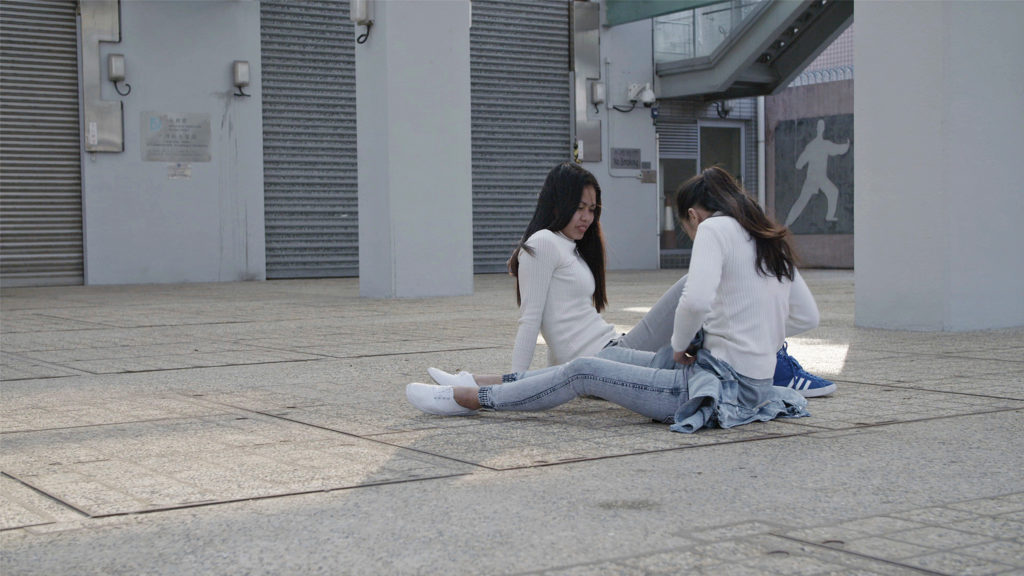 Stephanie Comilang, Lumapit Sa Akin, Paraiso (Come To Me, Paradise) (still), 2016. Video, 26 minutes. Courtesy the artist.
Stephanie Comilang, Lumapit Sa Akin, Paraiso (Come To Me, Paradise) (still), 2016. Video, 26 minutes. Courtesy the artist.
